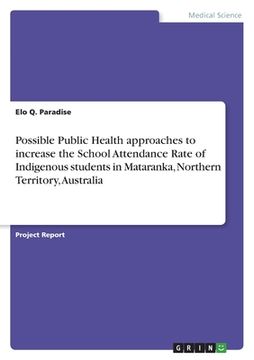Share
Possible Public Health approaches to increase the School Attendance Rate of Indigenous students in Mataranka, Northern Territory, Australia (in English)
Elo Q. Paradise
(Author)
·
Grin Verlag
· Paperback
Possible Public Health approaches to increase the School Attendance Rate of Indigenous students in Mataranka, Northern Territory, Australia (in English) - Paradise, Elo Q.
$ 34.32
$ 42.90
You save: $ 8.58
Choose the list to add your product or create one New List
✓ Product added successfully to the Wishlist.
Go to My WishlistsIt will be shipped from our warehouse between
Monday, July 15 and
Tuesday, July 16.
You will receive it anywhere in United States between 1 and 3 business days after shipment.
Synopsis "Possible Public Health approaches to increase the School Attendance Rate of Indigenous students in Mataranka, Northern Territory, Australia (in English)"
Project Report from the year 2020 in the subject Medicine - Medical Frontiers and Special Areas, grade: Pass with Distinction, James Cook University, language: English, abstract: This work tries to elaborate public health approaches to increase the school attendance rate of indigenous students. It is approximately 50.000 years ago that the first humans settled down in this part of the world. Scientists and archaeologists assume that the first aboriginal people moved from the Indonesian archipelago down to Australia. The sea level was significantly lower than today and the ancestors of the native Australians could move to the country in small boats. Ancient Australia was an inhospitable and harsh place to live. However, the indigenous population was able to colonize the continent, but sparse. Scientists estimated the maximum population to be 900.000 people. Their culture was shaped by a strong spirituality, which is still important for today's aboriginal peoples. The first European discoverers arrived in the 17th century. On the 22nd August 1770, Captain James Cook declared the east coast of Australia to be a British colony. Over the next few years, the European settlers started to take the land from the aboriginals and create a western nation, while the number of indigenous people was reduced significantly. Since those days, integration and protection programs were launched to increase the health and life of the so called first-nation people. Although, key factors like the child mortality or the life expectancy are still significantly different in indigenous and non- indigenous communities. To reduce those differences, the Australian government started the "Closing-the-Gap" initiative, created in 2008. The main target is to close the gap in life expectancy between indigenous and non-indigenous people within one generation.

